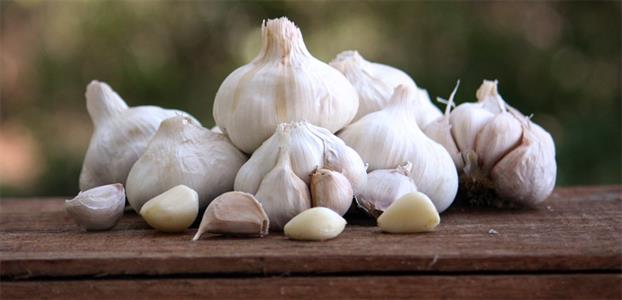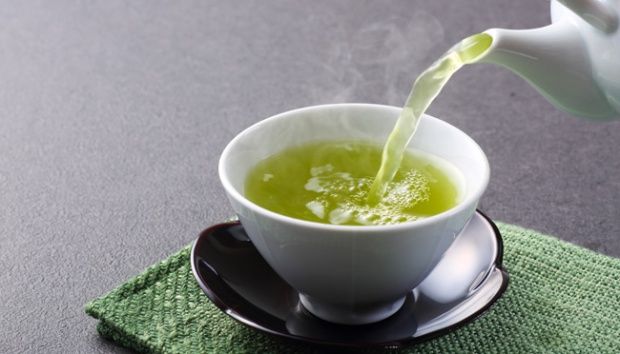Heavy, Painful & Swollen Legs
Prevention of Chronic Venous Disease
Varicose Veins
7/17/2023
Best Food and Drinks for Your Healthy Veins!
Standard procedures for treating chronic venous disease will usually include a combination of prescription medication, recommendations to increase activity, and regular exercise, together with the use of compression stockings. Alongside these aspects there is also a great deal that we ourselves can do by adapting and making informed changes to our dietary habits. In this article, we will break down the key areas that can boost our overall vein health, focusing on the food and drinks to improve blood circulation, and those that are best to avoid.
What food are beneficial for blood circulation?
Creating and following a healthy balanced diet is always the best method when it comes to improving overall health. However, there are a number of specific food that can have some great benefits to the blood flow and vein health. Below is a list of particular types of food, as well as singular ingredients, that can help improve blood circulation.

Food containing bioflavonoids
Bioflavonoids are found in brightly colored fruits and vegetables whose natural structure can assist antioxidants in protecting us from oxidative damage, which can lead to venous insufficiency and inflammation.1 They are also known to enhance the action of vitamin C in the body. They can be found in different plant foods and extracts including citrus fruits and other medicinal herbs.2
Examples of bioflavonoid-rich foods range from broccoli, cucumbers, bell peppers, spinach, and tofu, to grapes, cranberries, blackberries, strawberries, apples, lemons, oranges, limes, and grapefruits, among other citrus fruits.

Fiber
Fibers are non-digestible complex carbohydrates that can be found in plant food and are vital for the bowels to function correctly. A lack of fiber in the diet can create constipation, which can lead to a potentially higher risk of suffering from varicose veins3 and other venous diseases as it can increase the stress put on blood circulation on the lower extremities. As such, a diet which is high in fiber can avoid causing overexertion due to constipation and increase vein health.
Some examples of great fiber-rich food are lentils, chia seeds, flaxseeds, brown rice, and oatmeal.

Leafy greens
Leafy greens such as celery, lettuce, kale, or collard greens are fantastic sources of magnesium, an important mineral when it comes to maintaining the healthy function of blood flow and circulation within the body.
Added to that, leafy greens are great natural diuretics which can help reduce swelling in the legs due to varicose veins or other venous diseases.

Garlic: A natural blood thinner
For many centuries, garlic has been known as a natural medicine which helps to prevent cardiovascular diseases4, and can effectively reduce hypertension and thus blood pressure.5
It has been shown that the consumption of garlic as a base for a healthy diet was associated with a 16%-40% reduction in the risk of suffering a cardiovascular event. Other studies have also shown that, when consumed twice a day for a period of 3 months, garlic can improve blood flow by 50% through the upper arm artery.6

Ginger
Ginger has been an important element in traditional Indian and Chinese medicine for its many health benefits. When it comes to improving blood circulation, ginger helps by lowering the risk of high blood pressure,7 one of the worst enemies of blood flow.

Fatty fish
Fatty fish such as salmon or mackerel are great sources of omega-3 fatty acids known for their beneficial effects on circulation and healthy blood flow and in the prevention of the formation of blood clots.8
Interestingly enough, fish oil supplements, rich in omega-3 fatty acids, can also significantly reduce high blood pressure and improve blood flow to the legs, especially after exercising.9
Drinks to improve blood circulation
Alongside food, hydration is the best ally to improve blood circulation and avoid the risk of worsening any venous disease.
Staying properly hydrated is an indispensable part of healthy living and yet, something that is so easily taken for granted. Dehydration can severely reduce the body’s ability to function at its best, affecting vital organs like the kidneys and heart, reducing our energy levels and mental faculties, while leading to deteriorated blood circulation10 and raising our core body temperature. Factor in longer, hotter summers with record-breaking heatwaves and their effect on vein health, and it could be argued that there has never been a more important time to truly understand hydration.
Water should definitely be the main source of hydration in our daily lives, but let's look a little deeper into other beverages, and how these particular drinks can benefit and improve our blood circulation.

Green tea
Green tea11 is famous for its antioxidant properties which protect our bodies from free radicals. Green tea can also promote vasodilation by improving our blood flow.
Green tea is therefore an excellent option to drink during the day, no matter how hot or cold the weather outside might be.

Pomegranate juice
Pomegranate juice is a wonderful and healthy option for improving blood circulation12 since it is rich in antioxidants and other nutrients and vitamins, such as vitamin C, which are known to help strengthen the blood vessels. A great beverage with good anti-inflammatory properties that is highly recommended to people suffering from varicose veins.

Fruit juices and smoothies
Fruit juices and smoothies are one of the best ways to pack all the beneficial vitamins and nutrients into 1 glass: a great kickstart on reaching our recommended “5-a-day” target.
When it comes to smoothies, try adding turmeric or ginger to create a super-charged boost towards a healthier circulation.
Diet for poor circulation: What to avoid
In order to prevent the progression of varicose veins or any other form of chronic venous insufficiency, there are certain foods and drinks that should be avoided or reduced as much as possible.
- Reduce salt and increase potassium consumption. Salt can increase water retention which can have a direct negative effect on varicose veins. Added to that, salt can also increase the swelling of the veins together with an increase in blood pressure.13 Potassium-rich foods on the other hand (such as bananas, beans, mushrooms, potatoes, pumpkins), can help reduce water retention and decrease blood pressure.14 It is important to note that these two simple electrolytes do not live in harmony with one another on a cellular level inside our bodies: when potassium moves in, salt moves out straightaway!
- Reduce the consumption of processed meat. Processed red meat has been shown to be likely to increase the risk of suffering from a cardiovascular disease.15 Other processed meats such as sausages and bacon have a high salt content and have been linked with the risk of suffering from high blood pressure.16 Instead, opt for vegetables and when necessary, reduce the consumption of processed meat.
- Avoid highly-processed foods. These types of foods use substances that wouldn’t typically be used in freshly prepared meals at home, such as colorants, flavorings, hydrogenated oils, and other artificial sweeteners, among others. As such, a constant consumption of highly processed foods can have an overall negative impact on our health.17

To sum up, following a healthy diet, together with a regular exercise routine to improve blood circulation, keeping great levels of hydration, and reducing stress are great ways to maintain healthy veins and avoid the risk of suffering from venous disease.
Find out more information about other lifestyle changes to combat chronic venous disease that can be put into practice to improve quality of life when suffering from venous disease, a condition which sometimes can lead to serious health problems such as leg ulcers. We greatly recommend consulting your doctor about which venoactive drug might be more suitable for your individual case. Chronic venous disease can lead to serious health problems such as ulcers, that’s why, as with many progressive diseases, time is of the essence; and while creams may alleviate discomfort, some oral treatments can act rapidly, striking at the core of the problem and not allowing the chronic venous disease to worsen.18
REFERENCES
-
Panche, A. N., Diwan, A. D., & Chandra, S. R. (2016). Flavonoids: an overview. Journal of nutritional science, 5, e47. https://doi.org/10.1017/jns.2016.41
-
Citrus Bioflavonoids Boost Blood Vessel Health. FNPA. Accessed on 12th September 2022. https://www.fnpa.org/citrus-bioflavonoids-boost-blood-vessel-health/
-
Amanda J. Lee, Christine J. Evans, Cathyrn M. Hau, F.Gerald R. Fowkes,Fiber intake, constipation, and risk of varicose veins in the general population: Edinburgh Vein Study, Journal of Clinical Epidemiology, Volume 54, Issue 4, 2001, Pages 423-429, ISSN 0895-435, from https://www.sciencedirect.com/science/article/abs/pii/S0895435600003000
-
Banerjee SK, Maulik SK. Effect of garlic on cardiovascular disorders: a review. Nutr J. 2002 Nov 19;1:4. doi: 10.1186/1475-2891-1-4. PMID: 12537594, from https://www.ncbi.nlm.nih.gov/pmc/articles/PMC139960/
-
Ried K. Garlic lowers blood pressure in hypertensive subjects, improves arterial stiffness and gut microbiota: A review and meta-analysis. Exp Ther Med. 2020 Feb;19(2):1472-1478. doi: 10.3892/etm.2019.8374. Epub 2019 Dec 27, from https://www.ncbi.nlm.nih.gov/pmc/articles/PMC6966103/#:~:text=Garlic%20supplements%20have%20shown%20effectiveness,levels%20and%20blood%20'stickiness
-
Mahdavi-Roshan M, Mirmiran P, Arjmand M, Nasrollahzadeh J. Effects of garlic on brachial endothelial function and capacity of plasma to mediate cholesterol efflux in patients with coronary artery disease. Anatol J Cardiol. 2017 Aug;18(2):116-121. doi: 10.14744/AnatolJCardiol.2017.7669. Epub 2017 May 24, from https://www.ncbi.nlm.nih.gov/pmc/articles/PMC5731260/
-
Wang Y, Yu H, Zhang X, Feng Q, Guo X, Li S, Li R, Chu D, Ma Y. Evaluation of daily ginger consumption for the prevention of chronic diseases in adults: A cross-sectional study. Nutrition. 2017 Apr;36:79-84. doi: 10.1016/j.nut.2016.05.009. Epub 2016 Jun 3, from https://pubmed.ncbi.nlm.nih.gov/28336112/
-
Cohen MG, Rossi JS, Garbarino J, Bowling R, Motsinger-Reif AA, Schuler C, Dupont AG, Gabriel D. Insights into the inhibition of platelet activation by omega-3 polyunsaturated fatty acids: beyond aspirin and clopidogrel. Thromb Res. 2011 Oct;128(4):335-40, from https://pubmed.ncbi.nlm.nih.gov/21621252/
-
Pearson SJ, Johnson T, Robins A. Fish oil supplementation, resting blood flow and markers of cellular metabolism during incremental exercise. Int J Vitam Nutr Res. 2014;84(1-2):18-26, from https://pubmed.ncbi.nlm.nih.gov/25835232/
-
Watso JC, Farquhar WB. Hydration Status and Cardiovascular Function. Nutrients. 2019 Aug 11;11(8):1866. doi: 10.3390/nu11081866. PMID: 31405195; PMCID: PMC6723555, from https://www.ncbi.nlm.nih.gov/pmc/articles/PMC6723555/
-
Din USU, Sian TS, Deane CS, Smith K, Gates A, Lund JN, Williams JP, Rueda R, Pereira SL, Atherton PJ, Phillips BE. Green Tea Extract Concurrent with an Oral Nutritional Supplement Acutely Enhances Muscle Microvascular Blood Flow without Altering Leg Glucose Uptake in Healthy Older Adults. Nutrients. 2021 Oct 29;13(11):3895. doi: 10.3390/nu13113895. PMID: 34836149; PMCID: PMC8619110, from https://pubmed.ncbi.nlm.nih.gov/15226633/
-
Trexler ET, Smith-Ryan AE, Melvin MN, Roelofs EJ, Wingfield HL. Effects of pomegranate extract on blood flow and running time to exhaustion. Appl Physiol Nutr Metab. 2014 Sep;39(9):1038-42. doi: 10.1139/apnm-2014-0137. Epub 2014 May 16, from https://www.ncbi.nlm.nih.gov/pmc/articles/PMC4146683/
-
Edwards DG, Farquhar WB. Vascular effects of dietary salt. Curr Opin Nephrol Hypertens. 2015 Jan;24(1):8-13, from https://www.ncbi.nlm.nih.gov/pmc/articles/PMC5431073/
-
Reducing sodium and increasing potassium may lower risk of cardiovascular disease. (2021, November 16). News. Retrieved September 14, 2022, from https://www.hsph.harvard.edu/news/press-releases/reducing-sodium-and-increasing-potassium-may-lower-risk-of-cardiovascular-disease/
-
Red meat consumption linked to increased CVD mortality. Nat Rev Cardiol 9, 312 (2012), from https://www.nature.com/articles/nrcardio.2012.50
-
David C. Paik, Thomas D. Wendel, Harold P. Freeman, Cured meat consumption and hypertension: an analysis from NHANES III (1988-94), Nutrition Research, Volume 25, Issue 12, 2005, Pages 1049 -1060, from https://www.sciencedirect.com/science/article/pii/S0271531705002290
-
Elizabeth L, Machado P, Zinöcker M, Baker P, Lawrence M. Ultra-Processed Foods and Health Outcomes: A Narrative Review. Nutrients. 2020 Jun 30;12(7):1955, from https://www.ncbi.nlm.nih.gov/pmc/articles/PMC7399967/
- Mansilha A, Sousa J. Pathophysiological Mechanisms of Chronic Venous Disease and Implications for Venoactive Drug Therapy. Int J Mol Sci. 2018 Jun 5;19(6):1669. doi: 10.3390/ijms19061669. PMID: 29874834; PMCID: PMC6032391.
2024